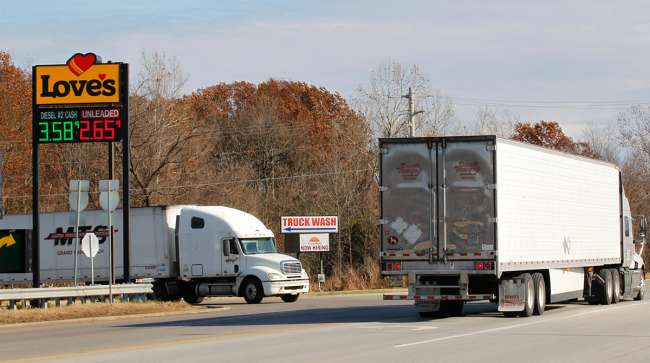Senior Reporter
CVSA Seeks Mileage, Time Limits for Personal Conveyance Guidance

[Stay on top of transportation news: Get TTNews in your inbox.]
The Commercial Vehicle Safety Alliance has petitioned federal trucking regulators to add a maximum time and/or mileage limit to clarify the definition of personal conveyance use by commercial truck drivers.
In a letter March 29 to the Federal Motor Carrier Safety Administration, CVSA said under the existing requirement it’s difficult for inspectors to verify legitimate personal conveyance time claimed by drivers.
“Under the current guidance, a driver could, in theory, drive hundreds of miles over the course of several hours all under the designation of personal conveyance,” CVSA wrote. “This presents the opportunity for increased driver fatigue and risk on our roadways, as drivers may decide to travel hundreds of miles in order to strategically relocate to an alternate location after driving a full day.”
CVSA Updated 395.2 Personal... by Transport Topics
FMCSA’s guidance for personal conveyance, the use of a commercial motor vehicle for personal use while off duty, has become a source of confusion for not only truck drivers, but also fleet managers.
CVSA said the guidance provides some parameters for the use of personal conveyance, all with the goal of ensuring the trip is for personal use.
“These parameters, however, are extremely difficult to verify during a roadside inspection, particularly when the personal conveyance has been utilized on previous days and/or trips in the record-of-duty status, making enforcement of the misuse of personal conveyance very difficult,” CVSA wrote. “These challenges were exacerbated by the change in the guidance to allow laden vehicles to be used under personal conveyance.”
“That change has opened the door for drivers to falsely claim the use of personal conveyance when they are really attempting to further their trip and extend driving time.”
Without a maximum daily distance or time limit, the guidance presents a legal way for drivers to significantly extend their driving time and the furtherance of their load while recording personal conveyance, CVSA said.
“The hours-of-service limits exist to mitigate the impacts of fatigue on highway safety,” the petition said. “Allowing significant extension of driving time with the use of personal conveyance undermines the goals of the hours-of-service regulations.”
CVSA initially petitioned FMCSA to make the change on Dec. 17, 2018. However, the petition was subsequently denied on Sept. 18, 2020.
In denying the petition, the agency said, “While we acknowledge the CVSA’s concerns, we do not believe there is a sufficient safety basis for initiating a rulemaking.”
But since the original petition, the inspectors’ trade group said its members have been seeing an increased misuse of the provision.
“In some instances, inspectors are able to identify this misuse and cite a driver for false record-of-duty status,” CVSA said. “As a result, the number of false log violations are increasing. In 2021, false records-of-duty status violations represented the third most documented driver violation, as compared to it being the sixth most frequent violation in 2019.”
Want more news? Listen to today's daily briefing above or go here for more info
As of Jan. 28, there were already 3,041 violations cited under the false records-of-duty status regulation, indicating the misuse of personal conveyance. Of those violations, 61% resulted in the driver being placed out of service because their misuse of personal conveyance was an attempt to conceal extra driving time, CVSA said.
Although the data is preliminary, it demonstrates that drivers are in fact using the vague guidance for personal conveyance in an attempt to avoid hours-of-service violations, CVSA said.
“In addition to drivers who intentionally misuse the provision to conceal hours, many drivers are unintentionally misusing personal conveyance because the definition and guidance are unclear,” CVSA said. “This has resulted in many safety-conscious motor carriers prohibiting their drivers from using personal conveyance to prevent violations based on their confusion of the proper use or their driver’s misinterpretation of allowable uses.”




